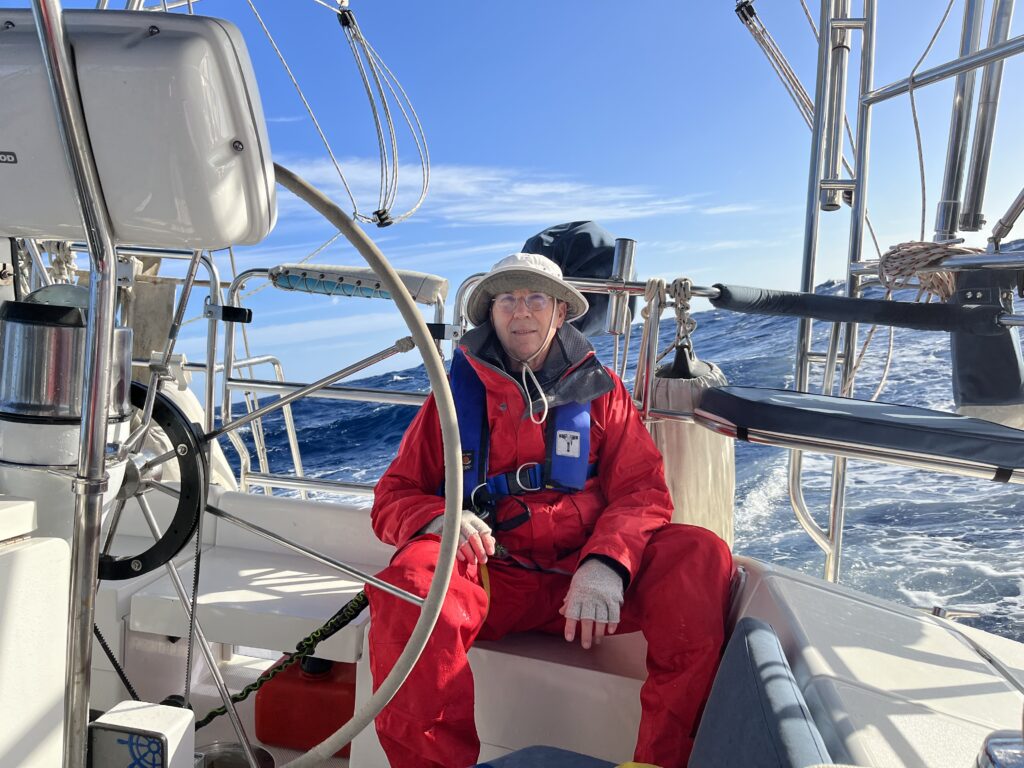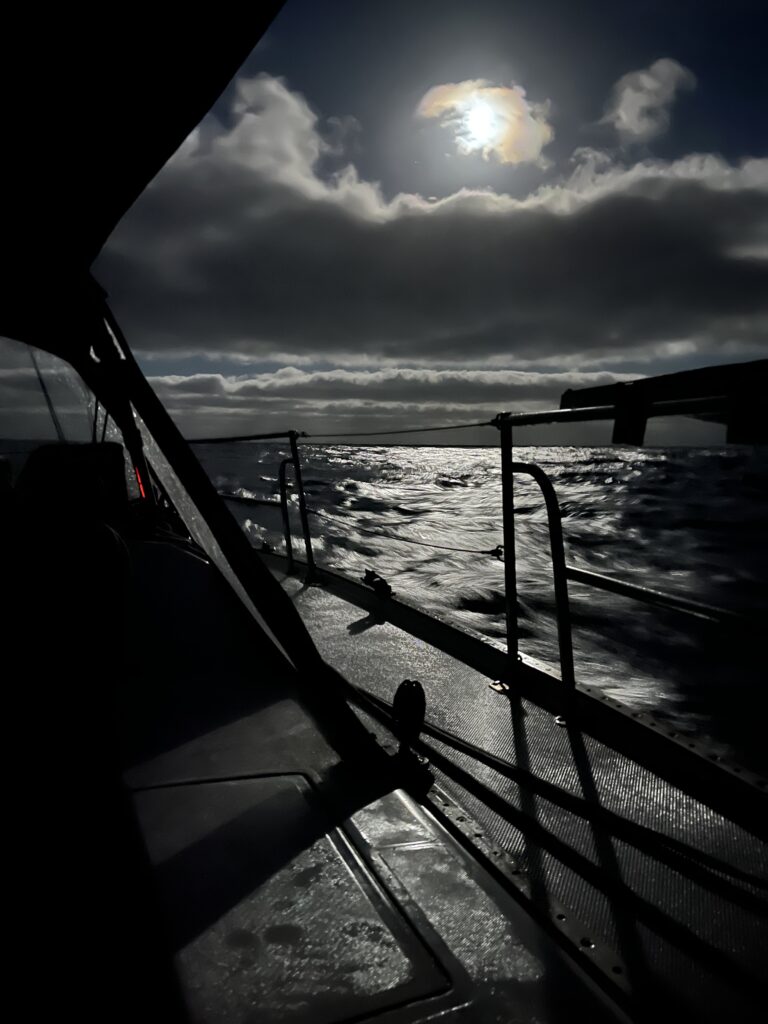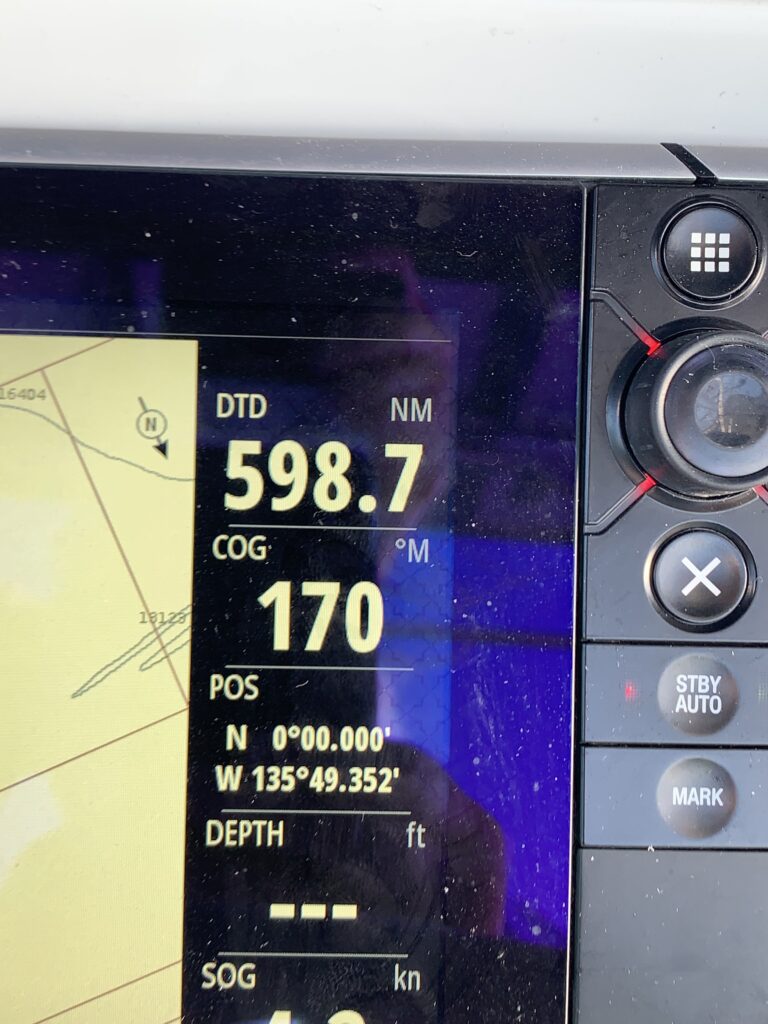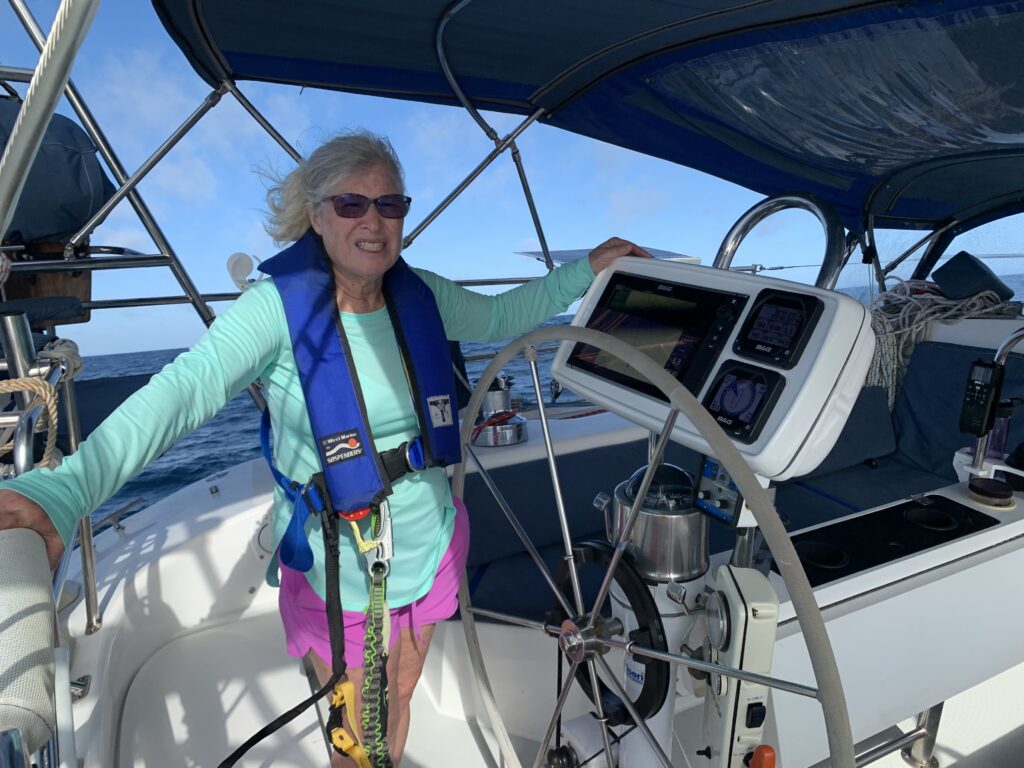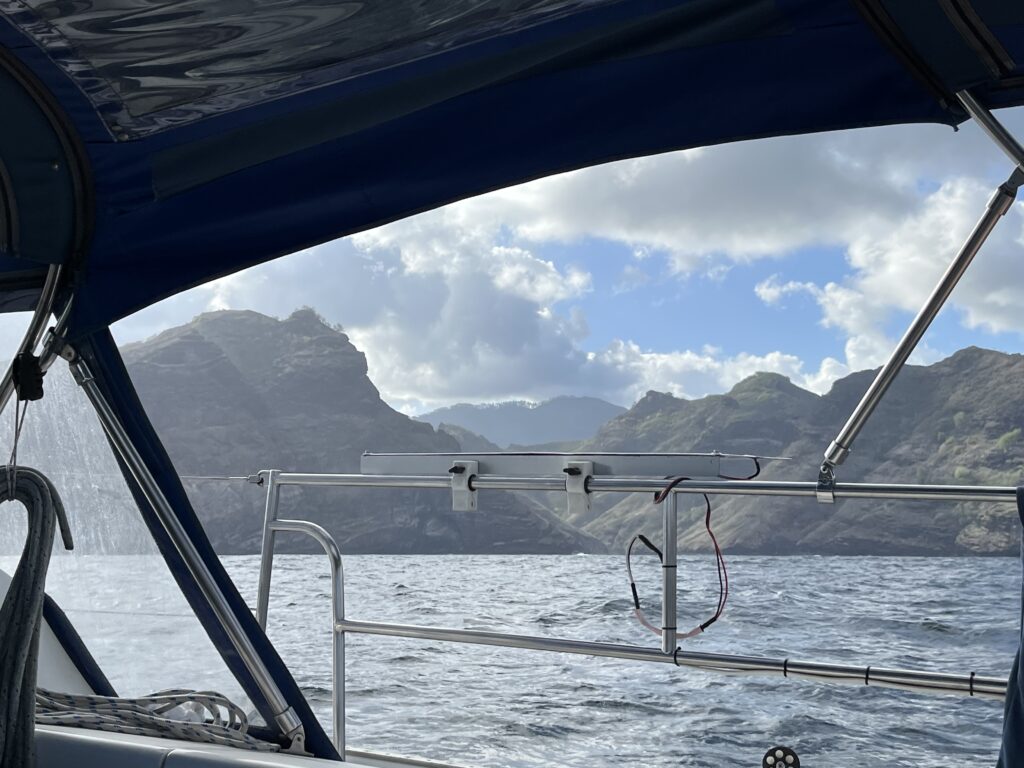During the years in which I’ve been talking about this passage, I’ve often said that I hope the passage is so boring that it’s completely devoid of any interesting stories. And be prepared to be bored, because that is pretty much the case.
Once we left the harbor in San Diego, we motored until the wind came up, which was about two and a half hours. I can’t remember what my exact thoughts were at the time, but I certainly wasn’t relaxed. On the way out, we faced big swells and chilly air. When the wind came up, it was 25 knots on the beam with big seas. We put two reefs in the mainsail and rolled in the jib a bit. That didn’t hold back our speed. We were off on a wild ride. The enormity of what we were embarking on, the cold and the big seas all kept me on edge. I found myself just coping, tending to each task that presented itself and waiting for the other shoe to drop. What was going to go wrong and how would we fix it?
I expected the first few days to be cold but conditions stayed that way for a good two weeks. Slowly, you get settled into the conditions and the routine of being at sea, functioning gets a bit easier, and the weather seems a bit more benevolent. The seas never really calmed down the whole trip, but as the weather got warmer, I started to relax a bit.
On the second night out, I decided to listen to music during my night watch. But toward the end of the new Jon Batiste album, which I was listening to for the first time, the rudder arm pin for the autopilot sheared off. I had to wake Pat and Marshall from well-deserved sleep to fix it while I hand steered. Fortunately, this had happened once before in 2016 and Pat was familiar with the issue. Plus, I had multiple spares of the pin. So, with Marshall’s help, Pat fixed it rather quickly. That was the last time I did anything on my night watch other than listen to the noises of the boat the wind and the sea.
We did a lot of sail changes on the passage. Sometimes we would be on some sort of a reach with a reefed main and jib. Other times we would lower the main and sail downwind on two jibs or even one. A few times we raised the spinnaker for a bit, but often the wind speed and angle weren’t right for the chute. During one of these sail changes, the engine over heated. It turned out that we got a vapor lock after long days of following seas, and the raw-water strainer was empty when the engine was started. That episode required changing the impeller and then flushing the impeller bits out of the hose that leads to the heat exchanger. A fried impeller was not new on Aldabra, so again, Pat and Marshall were able to make the repairs with ease.
We had a lot of prepared meals that had been frozen, so often meal prep was just about heating something up. We were really grateful for that because the big seas made it hard to use the galley. Each of us got thrown around pretty dramatically once or twice. Marshall was the only one who made some meals from scratch, and those were delicious breakfasts.
So, what was it like? One day is kind of like the next. The days go by very fast and the night watches seem long. At first we saw a lot of gray sky and gray ocean swells. We saw very little wildlife, some occasional birds and flying fish. Later we had some blue skies and blue seas when the sun came out. It was a full moon when we left so we didn’t start seeing stars until later. But it was fun to do some identification under Pat’s astronomer coaching.
I had expected that there would be a lot of time to read and study topics such as weather and destinations in the South Pacific. But there was very little down time. We each had two four-hour watches, one during the day and one at night. Then there was time to sleep and eat. I did weather downloads a couple of times a day and did some planning based on that. I also read a couple of Herman Melville books related to French Polynesia. Pat read, studied French and kept a journal. Marshall read, listened to podcasts, kept notes and participated in radio nets on the single-sideband radio. Both of them found things to fix.
We just took one day at a time, and the days got better as the climate got warmer. It was never scary or disagreeable. But as we approached Nuku Hiva, we all talked about how amazed we were that things had gone so well. None of us wanted to mention it earlier, because you never know what can happen, but close to the end of the trip, it felt easier to express relief about all the things that didn’t go wrong.
Our passage was so lucky that we didn’t even have windless days in the ITCZ. Most of the other boats making the passage talked about being becalmed for a few days or facing horrible squalls. We hardly noticed that we’d even been in the ITCZ.
There are so many things you prepare for on a passage like this. Broken boom, broken mast, hole in the hull or some other cause of taking on water, injury, sickness, non-functioning engine or non-functioning watermaker, ripped sails. You dread such things as non-functioning electronics, communications, refrigeration, stove, heads, solar panels. But all that stuff worked for us, and we were simply amazed.
So, what did fail besides the rudder-arm pin and the impeller? Here’s the list:
One of the depth sounders quit working, it may just need to be cleaned.
The spigot that diverts watermaker water from the galley sink (for testing) to the tank got bent pretty badly.
A latch on the Engels portable freezer broke.
The spinnaker pole became detached from the fitting that kept it on its track.
The spinnaker halyard got very chafed while being used to hoist the second jib.
A hinge on one of the toilet seats broke.
The CPT autopilot (backup) doesn’t stay in place for long periods of time so the belt gets loose.
The shower sump got clogged.
The boom preventer broke (as designed) and jumped overboard.
The electrical monitoring system got a bit confused at times.
The wind generator circuit breaker tripped and we didn’t discover it until after we anchored.
The kill solenoid on the engine stopped working, so we have to open up the engine compartment to kill the engine.
The hasp latches used to lock the lazarette broke.
The jib furling line frayed.
The companionway hatch started leaking in rain storms when the boat was heeling.
The steering cable groans.
Nothing major failed, and so many important elements worked consistently. We feel very lucky. Especially now that we are here in Nuku Hiva and three boats have come in with broken booms and one boat is still on the way after being dismasted.

